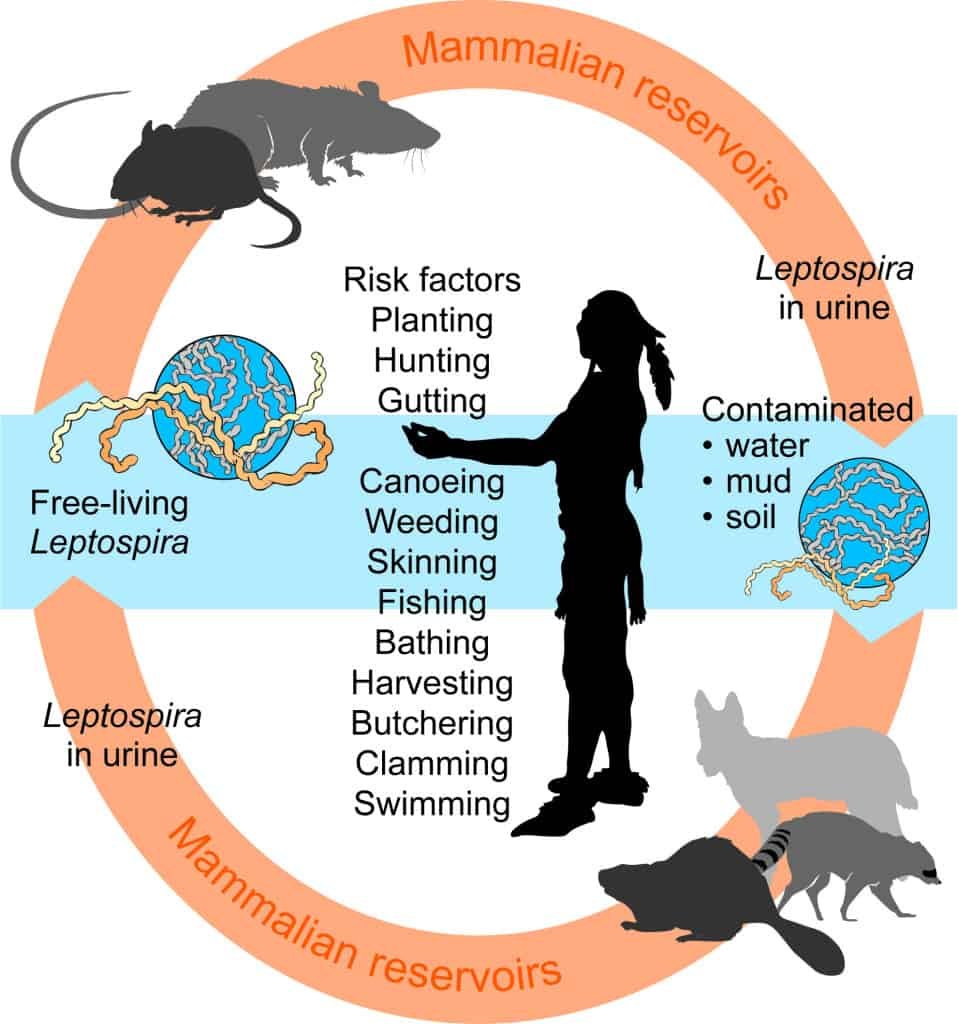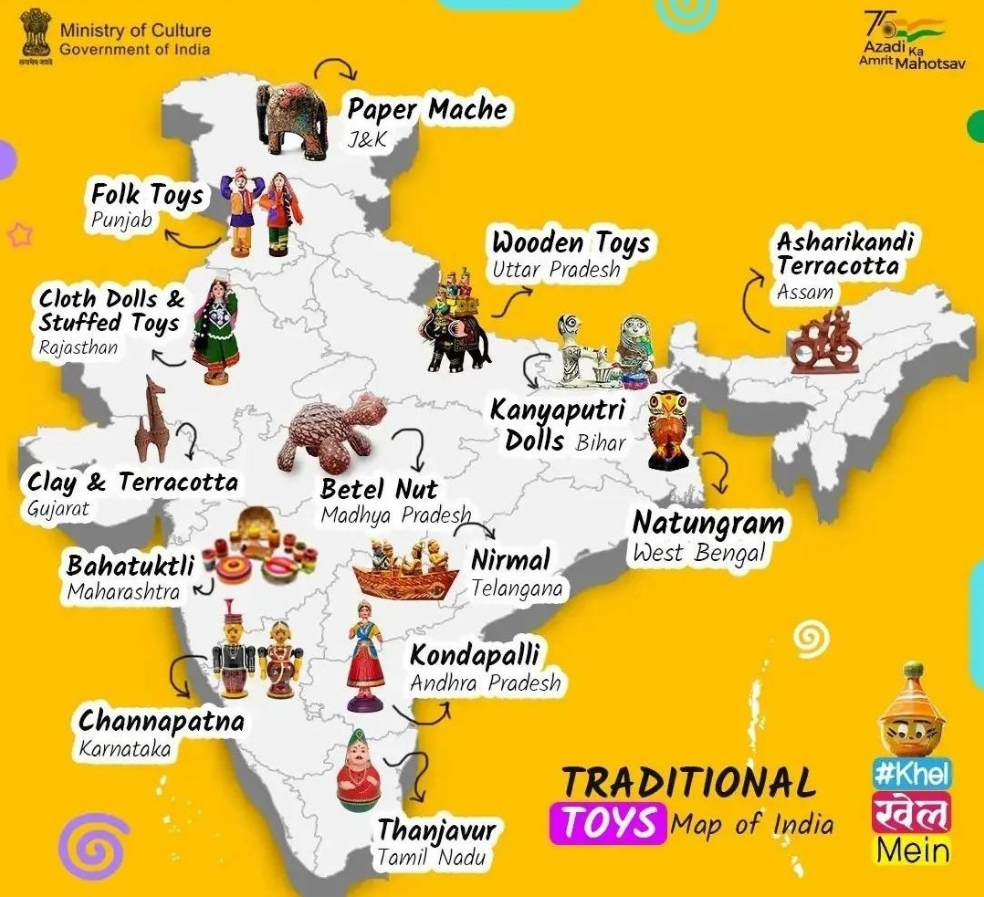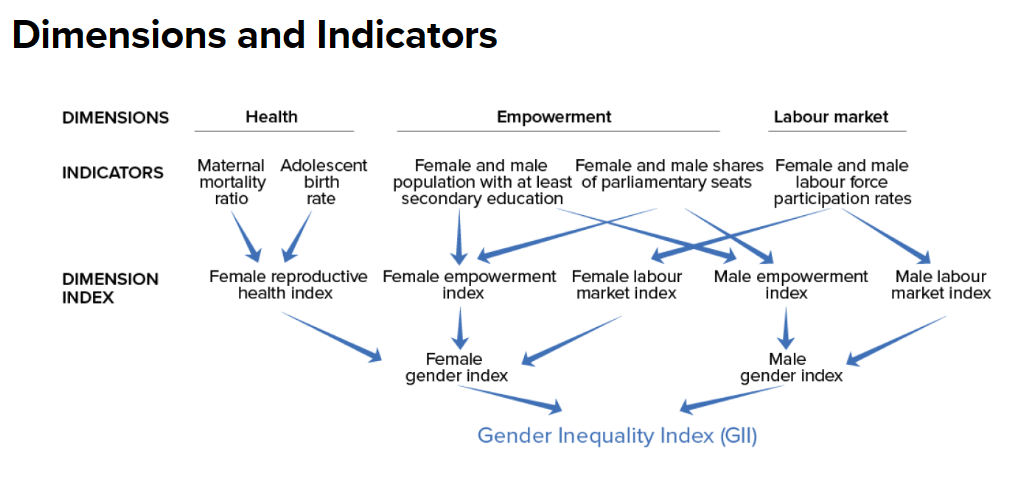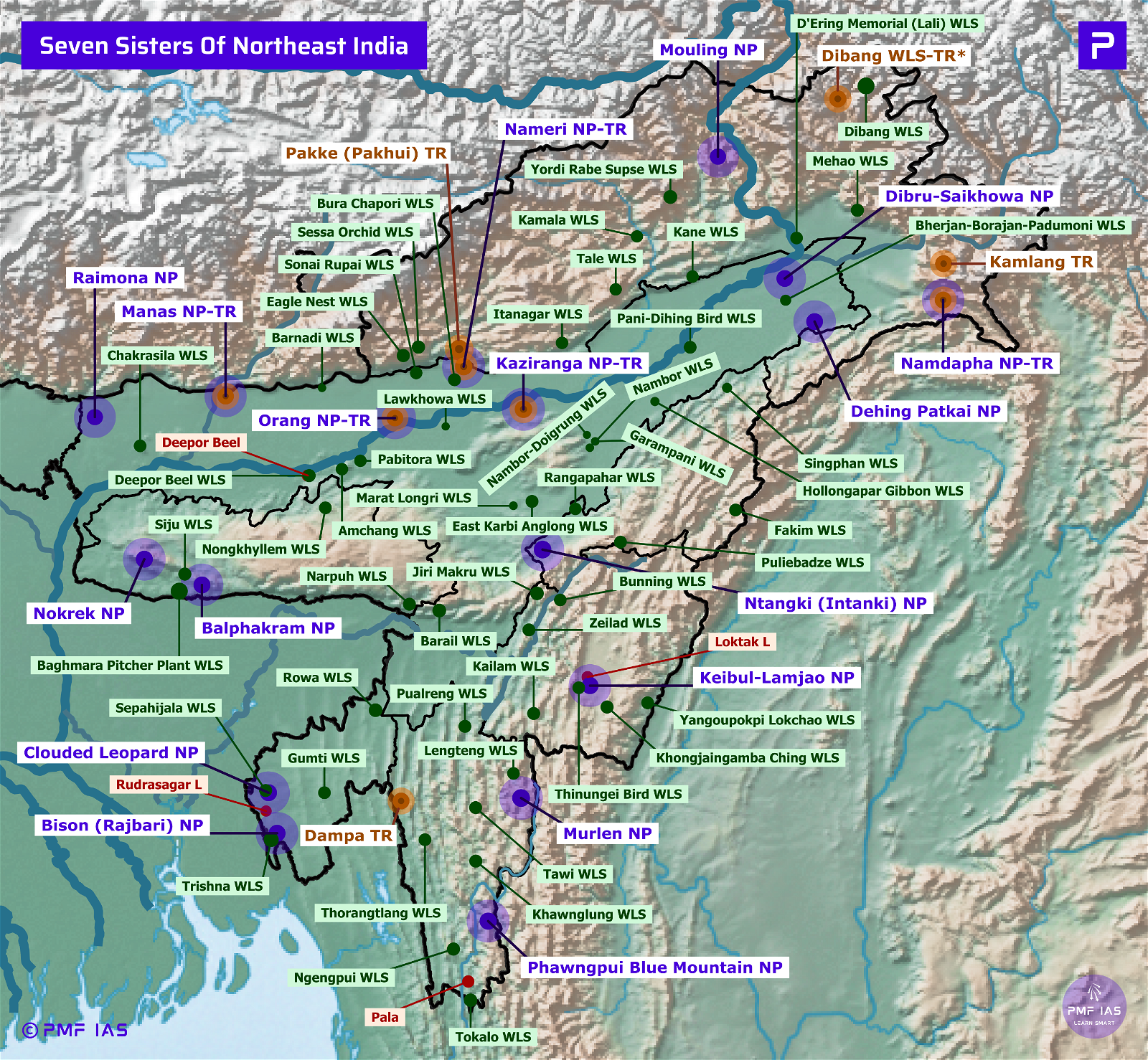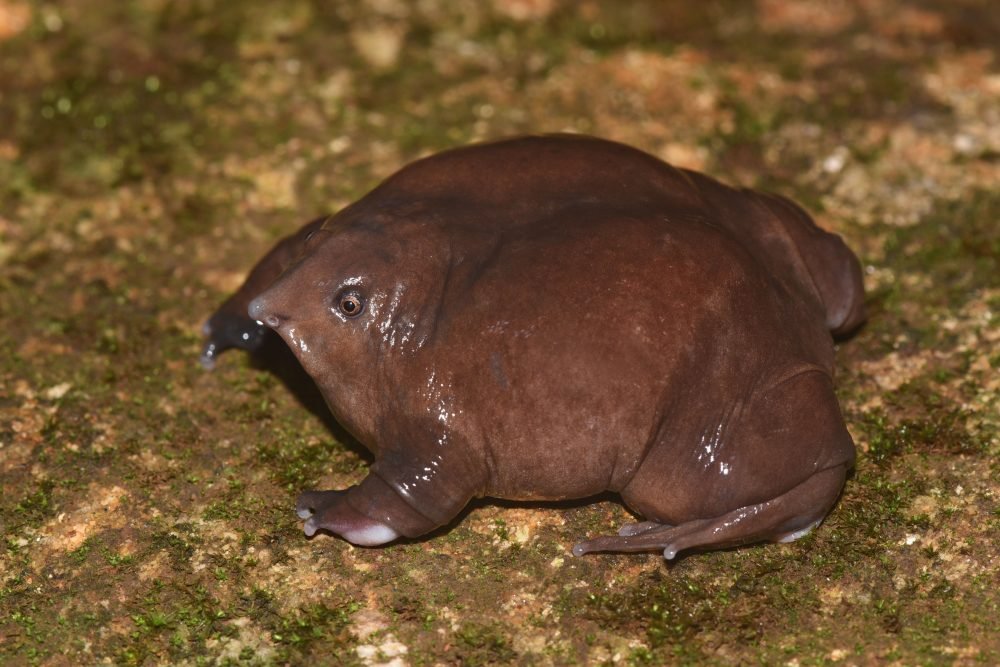
Current Affairs for UPSC Civil Services Exam – April 23, 2024
Subscribers of "Current Affairs" course can Download Daily Current Affairs in PDF/DOC
Subscribe to Never Miss an Important Update! Assured Discounts on New Products!
Must Join PMF IAS Telegram Channel & PMF IAS History Telegram Channel
{GS2 – Polity – IC – FRs} Article 32: ‘Heart and Soul’ of the IC
- Context (ET): Dr Ambedkar considered Article 32 as the heart and soul of the Constitution.
About Article 32
- It provides every Indian citizen with the right to seek constitutional remedy from the SC if they have been deprived of their fundamental rights (FRs).
- Like all fundamental rights, SC has mandatory (not discretionary) jurisdiction for violation of Article 32.
- The Parliament can empower any other court to issue directions, orders, and writs of all kinds without prejudicing the same powers of the SC. “Any other court” does not include the HCs.
- Article 226 has already conferred discretionary and intrinsic writ jurisdiction on HCs.
- The right to move to the SC shall not be suspended except as otherwise provided for by the IC.
- President can suspend the right to move to any court for the enforcement of Fundamental Rights during a National Emergency.
- Article 32 vests the SC with ‘Original’ and ‘Wide’ but ‘Not Exclusive’ powers to enforce FR.
|
Conditions under which the Supreme Court may refuse to grant the remedy
- Res Judicata – Res Judicata is applicable on a writ petition filed under Article 32.
- Habeas Corpus is an exception to this, but it can’t be filed on the same facts more than once.
- Inordinate Delay In Filing Petition – The Court may refuse to grant relief when there is an excessive delay in filing the petition without reasonable explanations.
- Malicious Petition – If a petition is malicious and if it is so found out, it may be liable to be dismissed.
- Misrepresentation or Suppression of Material facts—The Petition can be dismissed at any stage if the Petitioner is found to have misrepresented material facts.
- Existence of adequate alternative remedy – The existence of an alternate remedy is not an absolute Rule of Law, and there can be valid exceptions.
|
Can Article 32 be amended under Article 368 of the IC?
- Article 32 cannot be amended as it is a part of the basic structure of the constitution.
- Kesavananda Bharati v. State of Kerala: The SC established the doctrine of basic structure and stated that the ‘basic’ can’t be amended.
- L. Chandra Kumar vs. Union Of India and Others: The SC declared Article 32 an integral part of the basic structure. Hence, Article 368 does not apply to Article 32.
SC’s observations on Article 32
- Telugu poet Varavara Rao’s case: The SC directed the Bombay HC to expedite the hearing on a bail plea filed on medical grounds, which has been pending since September.
- Journalist Siddique Kappan case: The court asked why the petitioners could not go to the HC.
- Arnab Goswami Case: The SC affirmed that the right to petition under Article 32 is fundamental, stating that any hindrance to it constitutes a significant interference in the justice system.
- Romesh Thappar vs State of Madras (1950), the SC observed that Article 32 provides a “guaranteed” remedy for the enforcement of fundamental rights.
Significance
- Protection of Fundamental Rights – Provide individuals with a swift and effective means to seek judicial intervention when the state or any other authority infringes upon their rights.
- Judicial Review – Enable the judiciary to exercise judicial review over the actions of government bodies, administrative authorities, and other institutions.
- Checks and Balances – Allows courts to review and maintain a system of checks and balances.
- Prevention of Abuse of Power – Acts as preventive measures against the arbitrary exercise of authority by public officials or bodies.
- Promotion of Justice and Equity – Contributes to the promotion of justice and equity by providing individuals with access to timely and effective remedies against injustice, oppression, or unlawful deprivation of rights.
Article 32 and Article 226
|
Grounds of Difference |
Article 32 |
Article 226 |
|
Rights |
Article 32 is a fundamental right under Part III. | It is not a fundamental right; it is a constitutional right. |
|
Suspension |
It can be suspended if the President has declared an emergency under Article 359. | It cannot be suspended even at the time of emergency under Article 359. |
|
Scope |
Limited scope and applicable only for remedy if fundamental rights are violated. | Article 226 has a broader scope and is applicable if either a fundamental right or a legal right has been violated. |
|
Territorial Jurisdiction |
Pan India Territorial Jurisdiction. | Empowers the High Court to issue a writ within its local jurisdiction and has a narrower territorial jurisdiction. |
|
Discretion Power |
The Supreme Court can’t refuse rights and remedies under it. | Article 226 gives the High Court Discretionary power; hence, it is up to the High Court’s wisdom to issue a writ or not. |
{GS2 – IR – Europe} Schengen visa updates for Indian citizens
- Context (TH): The European Commission adopted specific rules on visas for Indian nationals.
- Under the new visa ‘cascade’ regime, Indian nationals can get visas valid for two years.
- It was decided in the context of the EU-India Common Agenda on Migration and Mobility.
- The agenda seeks comprehensive cooperation on migration policy between the EU and India, with the facilitation of people-to-people contacts.
Schengen visas
- It allows visitors to travel freely in the Schengen area for short stays of a maximum of 90 days in any 180-day period.
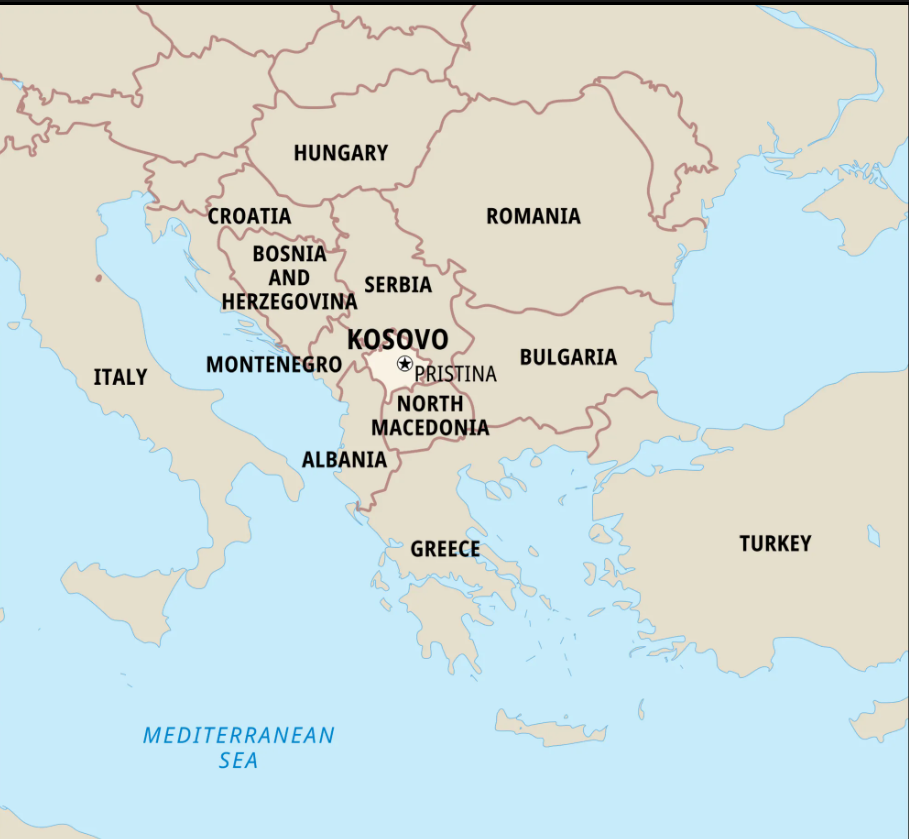
- However, this does not give the right to work.
- It is valid for almost all EU Member States and a few associated non-EU countries.
{GS3 – Envi – Species} Sustainable Finance for Tiger Landscapes Conference
- Context (DTE): The Bhutanese govt. is hosting the conference on Earth Day 2024.
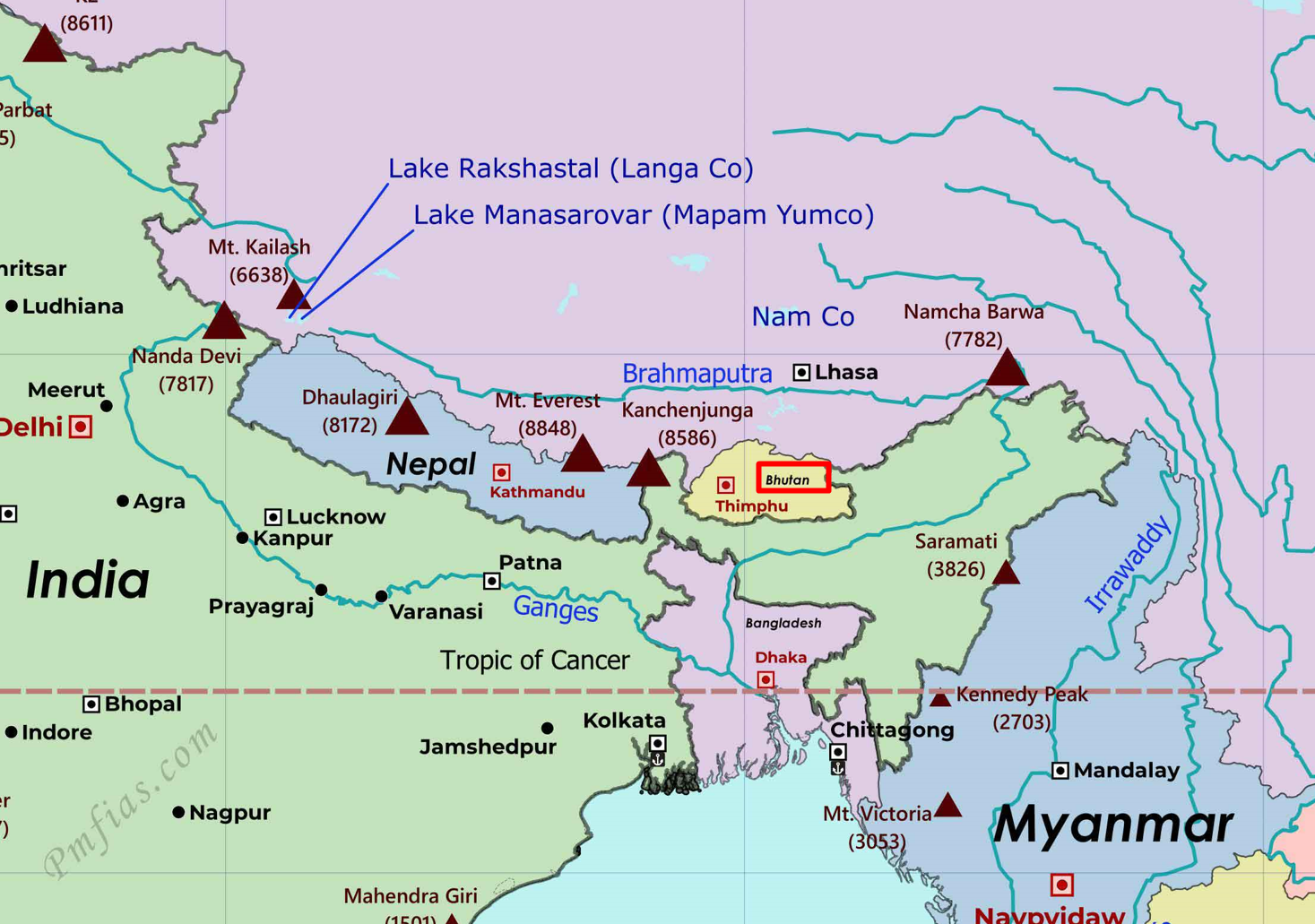
- It aims to mobilise 1 billion USD dollars additional catalysed from global public and private investors and institutions for tiger conservation by 2034.
- The objective is to recognise Tigers as an indicator species and their potential to contribute to biodiversity, climate, human well-being, sustainable development agendas and global funding.
- It will be organised by the Royal Government of Bhutan and the Tiger Conservation Coalition.
Tiger Conservation Coalition
- It was formed ahead of the 2022 (Year of the Tiger).
- It includes conservation organisations, including the Environmental Investigation Agency (EIA), Fauna & Flora International (FFI), IUCN, Natural State, Panthera, TRAFFIC, UNDP, Wildlife Conservation Society (WCS), World Wildlife Fund (WWF) and Zoological Society of London (ZSL).
|
To know more, visit > Tiger.
{GS3 – Envi – CC Impacts} Warming Climate Impact on Tundra Biome
- Context (DTE): According to a study, Environmental drivers of increased ecosystem respiration in a warming tundra, a warming climate may transform tundra ecosystems from carbon sinks to sources.
- The study found that a mean increase of 1.4˚C in air temperature, 0.4°C in soil temperature and a 1.6 per cent drop in soil moisture led to a 30% increase in respiration during the growing season.
- The increase in activity was due to an increase in both plant and microbial respiration, resulting in the release of carbon.
- Tundra regions with higher nitrogen limitations and sites that stimulated plant and microbial turnover show more sensitivity to warming through respiration responses.
- The warming rate in the tundra biome could reach 0.73°C per decade, significantly outpacing the global average rate of 0.19°C per decade.
Learn more about Global Warming and Arctic Region, Tundra Biome.
{GS3 – Envi – CC Impacts} Rising temperatures and Workers
- Context (IE): ILO released a report, “Ensuring Safety and Health at Work in a Changing Climate”.
Observation of ILO Report
- Over 70 per cent of all workers globally are exposed to rising temperatures and excessive heat.
- Every year, an estimated 22.85 million occupational injuries, 18,970 deaths, and 2.09 million disability-adjusted life years (DALYs) are attributable to excessive heat alone.
- Chronic kidney disease: It is increasingly affecting heavy manual labour, especially in hot and rural regions of countries like India.
- Cancer vulnerability: Too much ultraviolet (UV) radiation from the Sun can damage DNA in your skin cells and cause skin cancer.
- Increased risk in subsistence agriculture: Greater exposure to heat and outdoors impose greater risks, especially skewed against women.
- Other risks to manual workers: Pesticide poisoning, workplace air pollution, and parasitic & vector-borne diseases.
- Workers at greater risk: Workers in environmental goods and services, construction, manufacturing, refuse collection, emergency repair work, transport, tourism, and sports are at greater risk.
- It is necessary to re-evaluate existing legislation or create new regulations and guidance.
India’s response to increasing heat
- Recently, the Labour Ministry issued an advisory to all states and union territories to safeguard workers from the heat wave.
- It was advised to ensure the availability of drinking water, reschedule the workers’ working hours, and take other suitable measures to protect the labourers from the scorching heat.
{GS3 – S&T – Space} Life supporting evidences on Enceladus
- Context (MINT): Saturn’s ocean moon, Enceladus, appears to have ‘ingredients’ to support life.
- Saturn has 146 moons, the maximum in the solar system. Two more moons, Mimas and Titan, appear to support life, including an ocean under Mimas.
Cassini-Huygens
- It is a joint mission between NASA, the European Space Agency and the Italian Space Agency.
- It investigated Saturn, its rings and moons from 2004 to 2017.
- It discovered plumes of water from a sub-surface salty ocean (just like Earth).
- A dust analyser was used to measure the ice grains emitted by Enceladus, and information about the composition of the subsurface ocean was found.
Life supporting evidence
- Presence of liquid water: It harbours a liquid ocean beneath its icy crust that spans the entire moon.
- Carbon-based chemistry: The ocean also contains various carbon-based compounds.
- Energy: Tidal heating generates energy within the moon.
- Presence of Phosphate: Life-supporting Phosphate in ice grains originating from Enceladus’ ocean.
|
Another interesting topic to read is the Disappearance of Saturn’s Rings.
{GS3 – S&T – Defence} SIPRI Report
- Context (HT | TOI | ET): Global military spending reached $2,443 billion in 2023, marking a significant 6.8% increase from the previous year, according to new data from the Stockholm International Peace Research Institute (SIPRI).
- The percentage change was expressed in real terms, in constant 2022 prices.
Key Findings of the Report
- The world’s five largest military spenders in 2023 were the United States, China, Russia, India, and Saudi Arabia, collectively constituting 61 per cent of global military spending.
- In 2023, total military expenditure accounted for 2.3% of the global gross domestic product (GDP).
- Military expenditures by NATO member states totalled $1341 billion in 2023, representing 55 per cent of global spending.
- China’s military expenditure grew by $6 billion, allowing it to retain its second position.
- Pakistan’s military spending dropped to $8.5 billion in 2023, a decrease of $13 billion, relegating it to the 30th position globally.
- The average military spending per person was the highest since 1990, at $306.
- The surge in military spending can be attributed largely to the ongoing conflict in Ukraine and rising tensions in regions like Asia, Oceania and the Middle East.
- The largest percentage increase in military spending by any country in 2023 was seen in the Democratic Republic of the Congo (105%), where there has been protracted conflict between the government and non-state armed groups.
- South Sudan recorded the second largest percentage increase (78%) amid internal violence and spillover from the Sudanese civil war, the report says.

India Specific Findings
- India ranked fourth globally in military expenditure in 2023, totalling $83.6 billion, marking a 4.2 per cent increase from 2022 and a substantial 44 per cent rise from 2014.
- The surge in India’s military spending was primarily due to escalating personnel and operations costs, comprising nearly 80 per cent of the total military budget for 2023, the report said.
- Despite the rise in overall spending, capital outlays for military procurement remained relatively consistent, accounting for around 22 per cent of the budget in 2023, the report added.
- A significant portion of these procurement funds, approximately 75%, was allocated to domestically produced equipment, marking the highest level ever recorded.
{GS3 – DM – Floods} The Flood and Drought Conundrum in India
- Context (DTE): India is a country that faces the twin challenges of floods and droughts every year.
- 21.06 per cent of the country faced a drought in 2022, compared to 7.86 per cent in 2021.
- 46 million hectares of land was prone to flooding out of 329 million hectares of land in the country,.
Impacts of Floods in India
Loss of Life
- According to the National Disaster Management Authority(NDMA), floods are one of the most frequent and deadly natural disasters in India.
- Every year, on average, 1,600 lives are lost due to floods.
Damage to Property
- Floods can damage houses, buildings, roads, bridges, crops, livestock, vehicles, and other infrastructure and assets.
- According to the NDMA, floods affect about 75 lakh hectares of land and inflict damage worth Rs 1,805 crore to crops, houses and public utilities every year in India.
Displacement of People
- Floods can force people to leave their homes and create humanitarian crises by affecting the availability of food, water, sanitation, health care, and education.
- According to the Internal Displacement Monitoring Centre, floods displaced about 5.4 million people in India in 2020.
Environmental Degradation
- Floods can impact the environment by eroding the soil, altering the natural habitats of flora and fauna, polluting the water sources, and increasing the risk of landslides and epidemics.
- Also affects the ecological balance of rivers and wetlands by changing their hydrology and biodiversity.
- Floods can threaten the survival of endangered species such as the Gangetic dolphin and the gharial in the Yamuna River.
Economic Losses
- Floods can affect economic growth and development by reducing agricultural output, disrupting industrial production, affecting trade and commerce, and increasing expenditures on relief and rehabilitation.
- Floods can also affect the tourism sector by damaging the cultural heritage and natural attractions.
- A study by the World Bank says floods cost India about $14 billion annually in direct losses.
Causes of Floods in India?
Heavy Rainfall
- The monsoon season brings intense and erratic rainfall to different parts of the country.
- Sometimes, the rainfall exceeds the capacity of the soil to absorb or the drainage system to carry away the excess water, resulting in floods.
Snowmelt
- The snow and glaciers in the mountains melt due to rising temperatures and flow down into the rivers and streams.
- This can increase the water level and cause floods downstream.
- A flash flood occurred in Uttarakhand due to a glacial burst that triggered an avalanche of snow, ice, and debris.
Cyclones and Storms
- These weather events bring strong winds and heavy rains along the coastal areas of India, causing storm surges that can inundate low-lying areas and cause coastal flooding.
River Overflow
- This is a cause of floods that occurs when the water level in a river exceeds its carrying capacity due to excessive inflow from upstream or reduced outflow downstream.
- In 2023, the Yamuna River overflowed its banks due to heavy rainfall in upstream states such as HP and Haryana.
- The barrages in Delhi were unable to effectively regulate and redirect the river’s flow, leading to flooding of several areas along the river.
Insufficient Number of Waterbodies
- A 2021 Bangalore survey found that 20 per cent of the 837 lakes studied were encroached upon.
- The Government of Assam found that out of the 55,811 hectares of wetlands, barring rivers, creeks, and springs, 7,322 hectares of land have encroached.
- In Bihar, 70 per cent of the water bodies have vanished. That is, out of the 250,000 ponds, only 100,000 currently exist.
- In TN, the HC received a petition from the government that 47,707 acres of water bodies are under encroachment.
- The CAG found that 49 per cent of all encroachments in India were on waterbodies.
- Around 1,311 acres of water bodies were encroached upon to construct government buildings.
Need for flood Management
- During the monsoon season, around 350,000 million gallons of water flow into the Yamuna daily.
- Preserving this would provide drinking water for Delhi residents for a year.
- In November 2022, the amount of floodwater released to the sea in Chennai could cater to the needs for half a year.
- Floodwater can be conserved and used to overcome drought and water scarcity during summer.
- The per capita water availability (cubic metres/year) has declined sharply from 1951 (5,177 cubic metres) to 2022 (1,486 cubic metres).
- Water availability per capita is projected to further decline to 1,367 cubic metres per capita in 2031.
- According to the Union Ministry of Housing and Urban Affairs, per capita water consumption in urban areas is 135 litres, and in rural areas, it is 55 litres.
- However, two-thirds of India’s 718 districts are highly affected by water scarcity.
- Growing awareness of safe drinking water has driven increased spending on bottled/packaged water, with 12.2% of urban households now relying on it compared to just 2.7% a decade ago.
- Similarly, even in rural areas, consumption has risen from 0.5% in 2008 to 4% in 2018.
- The empirical evidence confirm that we need to manage rainfall productively.
Solutions for Flood Management in India
Structural Measures
Storage Reservoirs
- These structures capture and store excess water during high-flow periods, releasing it when needed during low-flow periods for purposes like irrigation, electricity generation, and water supply.
- They can moderate the flood peak by reducing the volume and velocity of water downstream.
Embankments
- These are structures that confine the flow of water within a channel or along a bank.
- They can protect adjacent areas from flooding by increasing the river’s carrying capacity or diverting the excess water to other channels.
Diversions
- These structures divert a part or all of the flow of water from one channel to another and reduce flooding by transferring excess water to less vulnerable areas or storage reservoirs.
- They can also provide irrigation or drinking water to other regions.
Non-structural Measures
Flood Forecasting and Warning
- This provides a prior estimate of approaching floods based on meteorological and hydrological data.
- It helps in the timely evacuation of people and movable assets to safer places.
- The Central Water Commission (CWC) operates a network of flood forecasting stations.
Flood Plain Zoning
- This is a regulatory measure that restricts/regulates the use of land in flood-prone areas based on their vulnerability and suitability.
- It aims to limit development in high-risk zones and advocate for the preservation of natural flood buffers like wetlands and forests to minimise damage to human settlements and infrastructure.
- NDMA has issued guidelines for floodplain zoning in India that classify the land into four zones: prohibited, restricted, regulated, and free.
Flood Insurance
- This is a financial measure that compensates individuals or groups who pay a premium to an insurance company for losses caused by floods.
- It aims to reduce the burden of relief and rehabilitation on the government and encourage risk reduction measures by the insured parties.
Flood Awareness and Education
- This is a social measure that creates awareness and imparts knowledge about floods among various stakeholders.
- It aims to enhance preparedness and response capacity by providing information on flood hazards, risks, mitigation measures, early warning systems, evacuation routes, emergency contacts, etc.
National interlinking of rivers
- An estimate indicated that the national interlinking of rivers can manage floods by channelling water from flood-prone to drought-prone areas, irrigating 34 million hectares.
- The idea was first suggested in 1919 by Arthur Cotton, chief engineer of the Madras Presidency.
- After independence, it was again proposed by KL Rao in 1960.
- In 2020, the GOI announced that it plans to interlink the Krishna, Godavari, Cauvery and Pennar rivers with a project estimate of Rs 60,000 crore.
Way Forward to preserve and protect Waterbodies
- The Standing Committee on Water Resources suggested repairing and removing encroachment of water bodies.
- The Central Pollution Control Board prepared ‘Indicative Guidelines for Restoration of Water Bodies’ and suggested removing the encroachment and blockades of waterbodies.
- NWP 2002 suggested a rainwater harvesting structure (RWHS) programme for managing ground and surface water.
- An estimate found that 1,000 litres of water can be preserved annually through RWHS for each square metre of area.
- A house of a 200 square metre area can maintain 200,000 litres of water annually, which translates to more than the WHO norm of 750 litres per day for a household.
- The Centre must bring out the state-wise actual statistics of waterbodies from its documents since independence.
- The government must desilt and strengthen the bunds of the waterbodies.
- After the first round, the government can give management responsibility to local administrations such as the Panchayat, municipalities and corporations.
- The local authorities must revamp the small channels and link them with the ponds/rivers.
- The district collector can visit the local administration to verify the management of water bodies. If their work is satisfactory, the government may allocate funds for other development projects such as overhead tanks, roads, drinking water and ditches, among others.
{Prelims – Envi – Species} Blackbuck (Antilope cervicapra)
- Context (DTE): Over two dozen waterholes are filled with water using tankers for blackbucks of Bihar’s Bhojpur, Buxar and Rohtas districts.
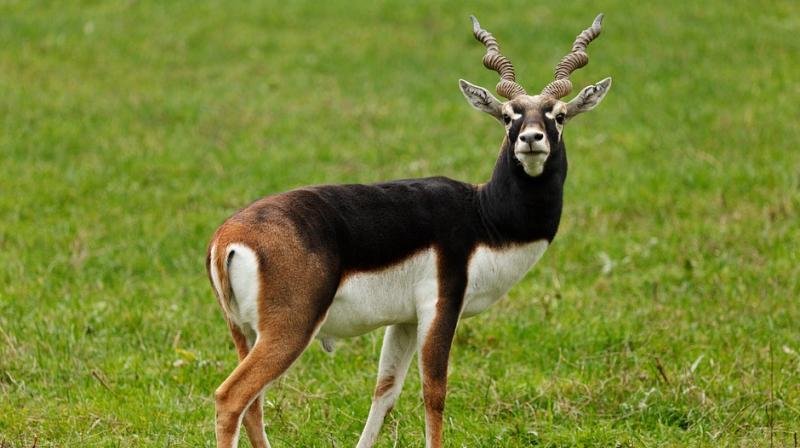
- Also known as Indian Antelope, it is the sole extant member of the genus Antilope.
- Formerly widespread across almost the whole of the Indian subcontinent, they are now limited to only small, scattered herds in Nepal, India and Pakistan.
Physical Features
- Blackbucks have slender and elegant bodies, pointed and delicate hooves and possess narrow, sheep-like muzzles and short tails.
- Their colouration depends on gender: the back, the sides, and the outer side of the legs are rich dark brown in males and yellowish in females.
- Both males and females have white underparts including the insides of the legs as well as a white ring around their eyes.
Characteristics
- They are seen in groups of 7-10. A mature female is generally the group leader.
- It is diurnal (active mainly during the day).
- They are considered as one of the fastest running animals on earth.
Habitat and Range
- Prefers tropical and subtropical savanna/rangeland and grassland.
- May also inhabit dry deciduous forest, woodland, semi-desert habitats, riverbanks and pasture.
- It is also found at the foothills of the Himalayas where the climate is moderate and jungles are not very dense.
- In India, they are found predominantly in the states of Gujarat, Punjab, Rajasthan and Haryana.
Conservation Status
- IUCN: Least Concern | WPA, 1972: Schedule I | CITES: Appendix III
- Threats: Excessive hunting, deforestation and habitat degradation.
- It has been declared as the State Animal of Punjab, Haryana, and Andhra Pradesh.
Significance in Indian Culture
- The antelope might have been a source of food in the Indus Valley civilisation (3300–1700 BCE); bone remains have been discovered in sites such as Dholavira and Mehrgarh.
- The blackbuck is routinely depicted in miniature paintings of the Mughal era (16th to 19th centuries) depicting royal hunts often using cheetahs.
- Tribes such as the Bishnois revere and care for the blackbuck.
{Prelims – Festivals} Chithirai Car Festival
- Context (TH): Thousands of devotees reached Masi streets to witness the grand car festival of Meenakshi Sundareswarar Temple.
- The Chithirai Car Festival, also referred to as Chithirai Thiruvizha or Meenakshi Kalyanam, is celebrated during the Chithirai or Panguni months (March-April) or the Tamil month of Thai.
- It is celebrated at the Rock Fort’s Thayumanavar Swamy Temple.
- The festival commemorates the divine union between Goddess Meenakshi and Lord Sundareswarar.
- The Madurai Chithirai Festival symbolizes the unity of Saivaites and Vaishnavites, as it glorifies both Lord Shiva and Lord Vishnu.
- The festival begins with the flag hoisting at the temple and different days are dedicated to different incidents related to Lord Shiva, the presiding deity and his consort.
- The last days of the festivals are celebrated in Alagar Hills in Madurai.
- According to the inscriptions on the temple walls, the first car festival was reportedly introduced in Madurai 700 years ago, during the reign of King Veerapandian.
Meenakshi Sundareswarar Temple
- Meenakshi Amman temple also known as Meenakshi Sundareswarar temple is located in the city of Madurai on the Southern bank of river Vaigai.
- The temple is dedicated to Sundareswarar (Lord Shiva) and Meenakshi (Parvathi).
- Built in the Dravidian style, this temple was once considered one of the Seven Wonders of the World. It is one of the few temples in Tamil Nadu to have four entrances facing four directions.
- The temple, in its present form, was constructed in the 1600s. Viswanatha Nayak, the first Nayak King of Madurai (1559-1600 A.D.), took the initiative to rebuild the structure.
- The restoration was carried out under the supervision of Ariyanatha Mudaliar, the Prime Minister of the Nayak Dynasty and the founder of the Poligar System.
- King Thirumalai Nayak (circa 1623-1659) played an important role in the temple’s construction. He built various complexes inside and outside the temple.
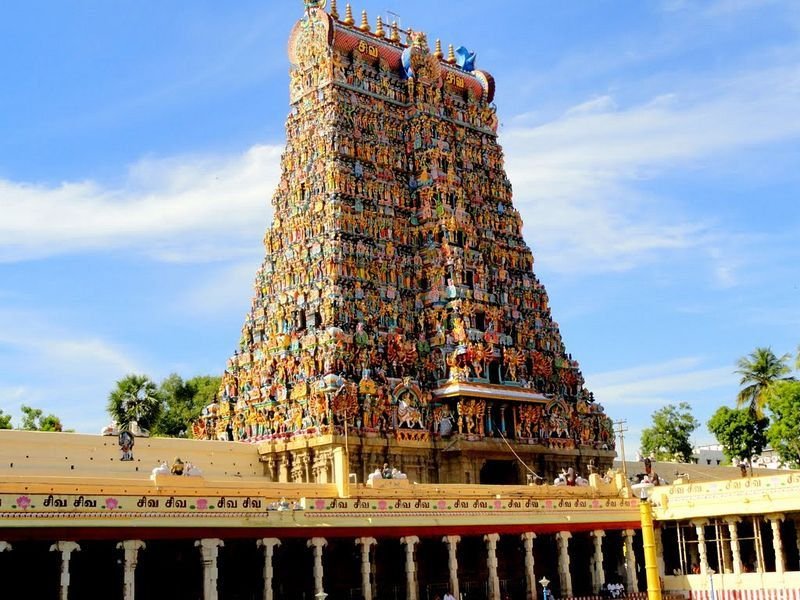
- The temple has 14 gopurams, including two magnificent Thanga (golden) Gopurams.
- One of the temple’s halls is famous as the “Ayiramkaal Mandapam” or “Hall of 1,000 Pillars” though only 985 of them exist today.
{Prelims – Festivals} Thrissur Pooram
- Context (HT I IE): Tight Police restrictions during Kerala’s largest cultural extravaganza, Thrissur Pooram, and alleged political interventions have snowballed into a controversy.
- Thrissur Pooram is one of the largest temple festivals celebrated all over the world.
- It is a grand celebration of Kerala’s cultural and spiritual essence.
- Thrissur, the cultural capital of the state of Kerala, is dressed up and decorated during this time to celebrate Thrissur Pooram.
- The Arattupuzha Pooram was the biggest festival in Kerala before Thrissur Pooram.
- It was started by Raja Rama Varma, famously known as Sakthan Thampuran, the Maharaja of Cochin (1790–1805), with the participation of 10 different temples.
- Thrissur Pooram is a seven-day festival. The sixth day is considered to be the most important—that’s when Thrissur Pooram takes place.
- It is witnessed by people from all walks of life, irrespective of caste, creed, religion, colour and age.
- Celebrated in the Malayalam month of Medam (April-May), the program is held at the Thekkinkadu Maidanam in Thrissur and is considered the mother of all poorams (annual festival).
- Pooram day is the day when the moon rises with the Pooram star in the Malayalam Calendar month of Medam.
- Majestic elephants adorned in traditional attire and traditional orchestra music are part of the festival.
- The processions and rituals of each deity follow a very strict itinerary, scheduled so that the tempo of the Pooram celebrations—36 hours nonstop—is maintained without any loss of energy.
- A massive parade is planned on temple grounds, accompanied by Chenda Melam and Pancha Vadyam music.
- It is centred on the Vadakkunnathan Temple, with all the temples sending their processions to pay obeisance to Shiva, the presiding deity.
- Devotees from all over India and abroad participate to offer their prayers to Lord Vadakkunnathan on this auspicious day.
- The fireworks display at Vedikkettu is one of the main attractions of this festival.
- The final day of the Pooram is the seventh day. It is often referred to as “Pakal Pooram.”
What is Chenda Melam?
|





![PMF IAS Environment for UPSC 2022-23 [paperback] PMF IAS [Nov 30, 2021]…](https://pmfias.b-cdn.net/wp-content/uploads/2024/04/pmfiasenvironmentforupsc2022-23paperbackpmfiasnov302021.jpg)
